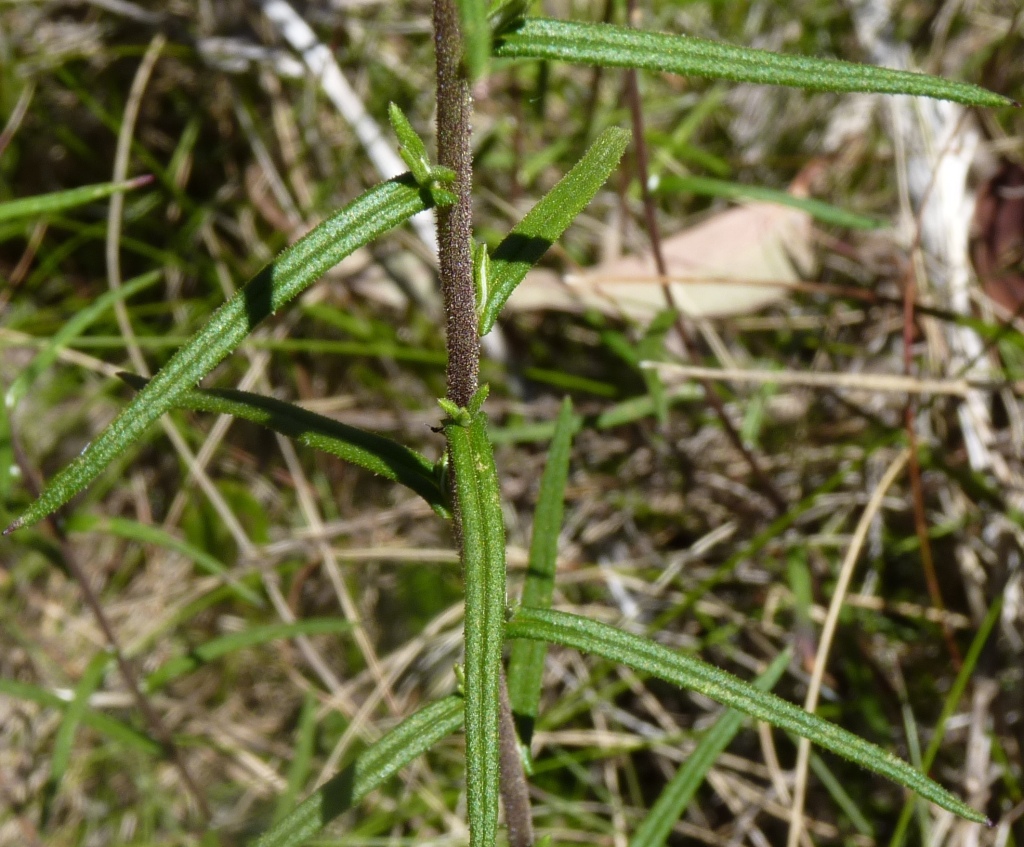Coronidium adenophorum
(F.Muell.) Paul G.WilsonErect annual or biennial to c. 50 cm high; stems usually unbranched below, scabrous with short septate and sessile glandular hairs. Leaves sessile, erect, c. linear, to 6 cm long, 1–6 mm wide, apex acuminate, base stem-clasping; surfaces glandular-hairy, scabrous above; margins recurved. Capitula solitary, hemispherical, to 4.5 cm diam., closely subtended by several leafy linear bracts; involucre 7–9-seriate; outer bracts white or pink in bud or towards the apex; intermediate bracts narrow-elliptic, 14–20 mm long, short-clawed, opaque, white, often tinged pink in bud. Florets all bisexual. Cypselas c. 1.5 mm long, 4-angled, glabrous, pitted, brown; pappus bristles 20–25, slightly connate, 4–6 mm long, white. Flowers Oct.–Mar.
LoM, MuM, GGr. Also SA. Known in Victoria from dune mallee of the Big Desert south of Murrayville, and in heathy woodland on Mt Abrupt in the Grampians. Rare, but sometimes locally abundant for a season or two following fire.
Jeanes, J.A. (1999). Asteraceae. In: Walsh, N.G.; Entwisle, T.J., Flora of Victoria Vol. 4, Cornaceae to Asteraceae, pp. 652–666. Inkata Press, Melbourne.
 Spinning
Spinning
